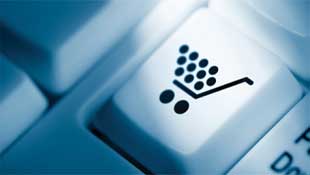| |
|
| |
|
 |
Supply
Chain by the Numbers |
| |
|
| |
- Aug. 20, 2020 -
|
| |
|
| |
|
| |
|
| |
Lowes Spending Big to Revamp Distribution Network; Company Finding Success with Reusable Containers for Consumer Goods; US Manufacturing Recovering; Fat Growth in China to Europe Rail Cargo |
| |
|
| |
| |
| |
| |
$1.7 Billion |
 |
That's what Lowes stores expects to spend on revamping its fulfillment network to make it more suited to – what else – efulfillment. The announcement is similar to one made by rival Home Depot in 2018, which announced plans to spend $1.2 billion to improve its network for ecommerce. But the strategies are different. Lowes said last week that it would open four additional ecommerce fulfillment centers over the next 18 months, including a direct fulfillment site in Mira Loma, Calif., set to open in October. The company also plans to open seven bulk distribution sites for large products such as appliances and barbecue grills, along with 50 cross-dock terminals where large items can be placed on delivery trucks sent to customers instead of sending them to retail stores first, as the company moves away from store-based deliveries. Home Depot's plan involves creation of 170 new, smaller distribution facilities across the US, so that it can reach 90% in one day or even less. The new HD sites will include dozens of direct fulfillment centers for next-day or same-day delivery of fast moving SKUs, as well as 100 local hubs where larger items like patio furniture and appliances will be consolidated for direct shipment to customers.
|
|
|
| |
| |
|
|
|
That was the level of the US Manufacturing output in July, according to the monthly index from the Federal Reserve Bank released late last week. That mean output was 3.5% below the baseline year of 2012 (index = 100) eight years later. But, the index was up from the 93.4 level seen in June, and the low of 83.8 in April. It was also well below the 104.9 level seen in February before the virus pandemic reach the US – meaning output is down nearly 10% from that period. US factory utilization was 69.2% in June, a big improvement from the low of 60.0% in April – but well below average utilization of 78.2% seen between 1972 and 2019. |
| |
| |
|
| |
| |
1232 |
 |
That's how many cargo trains were dispatched from various Chinese cities to European destinations in July. That was the highest monthly figure ever, and an increase of 68% year-over-year. That makes it five consecutive months of record train volumes, in part because Covid-19 has limited transport by air and sea at the same time there has been a very sharp increase in the demand for Chinese-made medical supplies in Europe. In 2011, technology giant HP pioneered the use of rail transport to move goods from inland Chinese manufacturing sites to European markets. The early success by HP eventually led to China's vision to create a Silk Road Economic Belt as part of its broad "One Belt, One Road" initiative, in this case to stimulate rail trade between Chinese inland cities and Europe. Service to Europe from China now is available from more than a dozen Chinese cities. Moving goods by rail cuts transit time about in half versus ocean container shipping, and costs about 50% less as well. Consistent with its initiative, China hopes to use the rail route to deepen its economic ties to European countries – and increase Chinese exports as a result. |
| |
| |
| |
| |
| |
|
|
|
| |
 |
 |
| |
 |
![]() |
 |
|
| |
 |
Feedback |
|
|
|
![]()
|
No Feedback on this article yet.
|
|
![]() |
|
|
|
![]() |
 |
![]() |
 |
|
| |